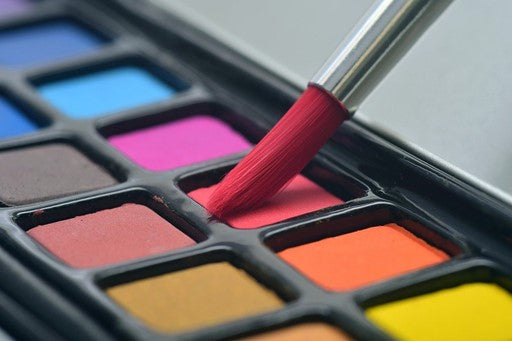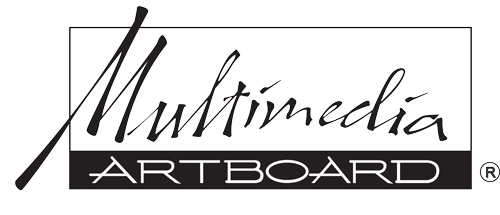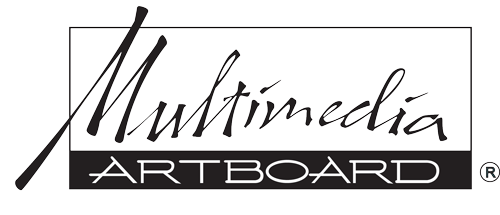
5 Key Considerations When Choosing a Good Watercolor Brush
Have you ever wondered how to choose the right watercolor brush for your painting? If yes, you are at the right spot.
Choosing a watercolor brush from a store or catalog can be overwhelming, given the unlimited choice of brushes around. Other than the paper you use, the choice of water brush color is the next most important tool for watercolor painting.
To help you cut through the clutter, we will walk you through five key considerations to keep in mind when choosing a good watercolor brush, so you are equipped to create a beautiful piece of art.
Before we delve into the details, let's take a look at the anatomy of a watercolor brush that will help you better understand what to look for when choosing a good watercolor brush.
The Anatomy of a Watercolor Brush
Your watercolor brush may look like a simple tool, but here are a few terms that you should be familiar with.
Tip – That’s the part that you paint with and comes in various shapes and sizes, ranging from round, flat brushes to one with a firm chisel edge.
Belly – The center section of the bristles that holds water and pigment.
Ferrule – The metallic part of the brush that connects the handle to the tip.
Handle – The plastic or wooden area of the brush that allows you to hold the brush.
Top Considerations When Choosing a Good Watercolor Brush
Let’s look at a few key considerations that will help you choose a good watercolor brush for yourself.
#1. Choose the Right Material
Perhaps the most critical consideration is to start with the right material. Let’s delve in deep and see what material refers to.
The Tip of the Brush
The material that's used for the tip of the brush has subtle but significant consequences on your painting. Knowing the material of the tip of your brush is the key to choosing a good brush. You can find watercolor brushes made from the following materials:
Natural Hair – Natural hair brushes are made from animal hair, which gives a better texture to the brush, reflecting more consistency in your painting. Watercolor brushes with natural hair are softer and more prone to damage, but they can serve you for years if cared for properly.
Synthetic Hair – As the name suggests, synthetic hair brushes are man made using nylon fibers that are typically undyed or dyed. Dying the nylon fiber can improve the functionality of watercolor brushes made from synthetic hair. Synthetic hair watercolor brushes make a perfect choice for beginners as well as experienced painters. Synthetic brushes are a pocket-friendly choice and serve you longer as they better retain their shape. Moreover, another feature that makes synthetic hair a more desirable choice is that they are cruelty-free.
Hybrid Combinations – A combination of synthetic and natural hair that allows you to enjoy the best of both worlds.
Handle
When choosing a good watercolor brush, don't forget that the handle material can also make a significant difference to your watercolor painting. It is best to go for watercolor brushes with hardwood handles instead of the plastic handle ones. Apart from longevity, a watercolor brush with the right handle feels good in your hand and affects how your brush feels during the painting process.
#2. Brush Balance Points
When choosing a watercolor brush, one cannot ignore the brush balance points. Before you make a choice, it's best to consider whether your brush feels comfortable to hold or not. A watercolor brush with a balanced handle is the one that gets thicker at the grip. When more weight is added to the brush handle close to the center of gravity, it's easier to hold the brush in an ergonomic-friendly way.
With brushes that are weighted too close to the tip, it will feel heavy in your hand and will not give you a comfortable feel as you paint. However, this type of brush may be a great choice for details.
On the other hand, if the brush is weighted at the end, it may be perfect for rigger but will not allow a controlled release of color.
Hence, when choosing a watercolor brush, make sure you give enough consideration to brush balance points and choose one that best suits your needs and painting style.
#3. Capacity
Capacity refers to how much water and color pigment a brush can hold. The capacity of a watercolor brush depends on the hair material and the belly size. Watercolor brushes made from natural hair inherently have a capacity advantage; however, the capacity may also be affected by the shape of the tip, the texture of the hair fibers, and the elasticity of the hair.
#4. Flow and Release
Flow and release refer to the rate at which the color flows from the tip of the brush and is released upon the page. When choosing a high-quality brush, you can look forward to a more even and consistent flow rate that leads to a slow and steady release of the pigment onto the paper.
For a more consistent and controlled release of colors, watercolor brushes with natural hair make the right choice.
#5. Snap and Spring
Last on the list of considerations for choosing a good watercolor brush is the snap and spring. Snap refers to how quickly the brush bristles snap back and align with the handle after bending at an angle. Watercolor brushes with natural hair have very little snap, while other fibers may have a long snap. In short, snap refers to the shape retention of the brush.
On the other hand, spring refers to how well the belly of the brush controls itself as you paint. A good quality watercolor brush must always have a spring so you can get a more controlled release of color as you paint.
Final Words
Your choice of watercolor brush can significantly impact your painting. So why not invest some time in your research and use these five considerations to make the right choice for yourself? At Multimedia Artboard, you can find the finest watercolor brushes collection that allows you to create masterpieces that you can flaunt. Learn more about the watercolor brush collection here.



